BOSTON – During early batting practice Wednesday, Mookie Betts stood next to Brock Holt, taking grounders at shortstop.
Shortstop? Another new position for Betts?
No.
“I always do that,” Betts said. “Loosen my arm. Then I go over to second base.”
Betts, 21, played second base again Wednesday night at Fenway Park, although his future won’t be there. That is the domain of one Dustin Pedroia, currently out after wrist surgery.
“With Dustin coming back (next year), we see Mookie as an outfielder,” Manager John Farrell said.
Regardless, Betts figures to be in the Red Sox lineup. Boston may have found its answer at the leadoff spot. Since his last recall to the majors Aug. 18, Betts was batting .296 before Wednesday night’s game. As a leadoff hitter, he has a .373 on-base percentage.
“He’s handled it fine,” Farrell said, “when you consider how often he’s reached base. He gives you a power threat (five home runs) for a young guy, with base-stealing capability (6 of 9 steals).
“But it’s his on-base ability that profiles to the spot in the order.”
It’s been a surreal run for Betts. We began the season talking “Mookie Mania” in Portland, Betts not only batted .355 for the Sea Dogs (.994 OPS) but extended an on-base streak from last year into May, totaling 66 games.
From Portland, Betts jumped to Triple-A Pawtucket (.335/.920 OPS), then made his major league debut June 29.
“It’s been a crazy year,” Betts said, “but I’m happy to be here.”
Think about it. On July 9, 2013, Betts got promoted from low-level Class A to advanced Class A Salem. A year later he’s in the majors.
“It’s amazing how quickly he’s moved through the system,” said Victor Rodriguez, Boston’s assistant hitting coach. “He finds a way to get wood on the ball.”
The baseball term is squaring up. Scouts at Hadlock Field this spring raved about Betts’ ability to make good contact.
Rodriguez first saw Betts in 2011 during a tryout before the major league draft. Rodriguez threw him batting practice on a field in Rome, Georgia.
“He had quick hands,” Rodriguez remembered.
Boston drafted Betts in the fifth round out of John Overton High in Nashville, Tennessee. He played in Lowell in 2012 (.267, no home runs), then took off the following year. His ascent is not by accident.
“He’s hard on himself,” Rodriguez said. “He wants to do things the right way.”
It’s a reminder from a spring- training interview with Betts. He was beginning to be labeled a prospect. There were comparisons to Xander Bogaerts. Betts shrugged it all off.
“The important thing for me is to focus on getting better each and every day,” Betts said in March.
That didn’t stop when he reached the majors. Big league baseball became a classroom.
“He asks a lot of questions, always wanting to get better,” first base and outfield coach Arnie Beyeler said. “He’s going to be a good one.”
Betts has been called up to Boston three times. Even when he was batting .235 in his first stint, he put together good plate appearances.
“He’s managed his at-bats well,” Farrell said. “He’s never looked out of place in terms of chasing pitches or expanding the strike zone.
“Offensively he’s been consistent and the production has improved with each successive time he’s been recalled.”
That’s because Betts kept learning.
“I picked up a lot,” he said, “especially about the pitchers. You can’t just ‘see it and hit it.’ You have to have an approach.”
That said, “the game is the same. They still have to throw it over the plate,” he said. “It was good that I didn’t overwhelm myself.”
Betts has always been a mature hitter, working counts, looking for a good pitch. He averages 4.36 pitches per plate appearance, which would rank fourth in the American League if he had more at-bats.
“Seeing pitches has always been a strong suit for me,” Betts said. “Seeing a lot of pitches allows me to know what (the pitcher’s) got, and also for my teammates to see all his pitches.”
Betts isn’t working for walks but for a good hit.
“He gets better the deeper he goes in the count,” Rodriguez said.
All of this is impressive, considering that Betts is breaking into the majors while learning a new position. When Betts began to show big-league potential – with Pedroia signed through 2021 – Betts began getting time in center field, first at Hadlock Field, then in Pawtucket, then in the quirky confines of Fenway.
“It was (intimidating) at the start,” Betts said. “Once I got to talking to the coaches … and I know my teammates are behind me, it allows me to adjust quicker.”
Farrell said Betts’ improvement in the outfield “is real and tangible.” So much so that the Red Sox felt comfortable enough to move him back to second while Pedroia is out.
“I look at myself as both (second base and center field),” Betts said. “Wherever they put me, that’s where I’ll be for the day.”
Whatever the position, the Red Sox may be putting him atop the starting lineup on April 6, 2015 – next season’s opener. Betts knows his opportunity.
“I have to come into spring training and try to win a job,” he said.
Send questions/comments to the editors.

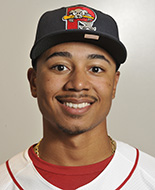
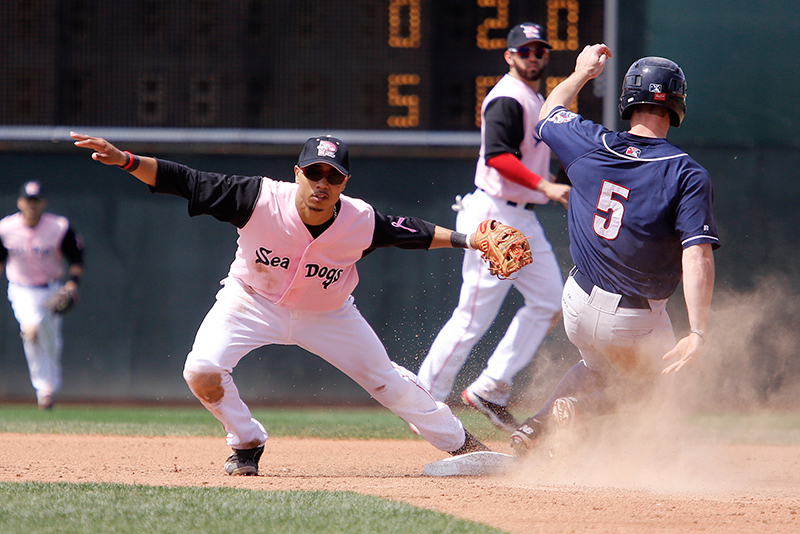
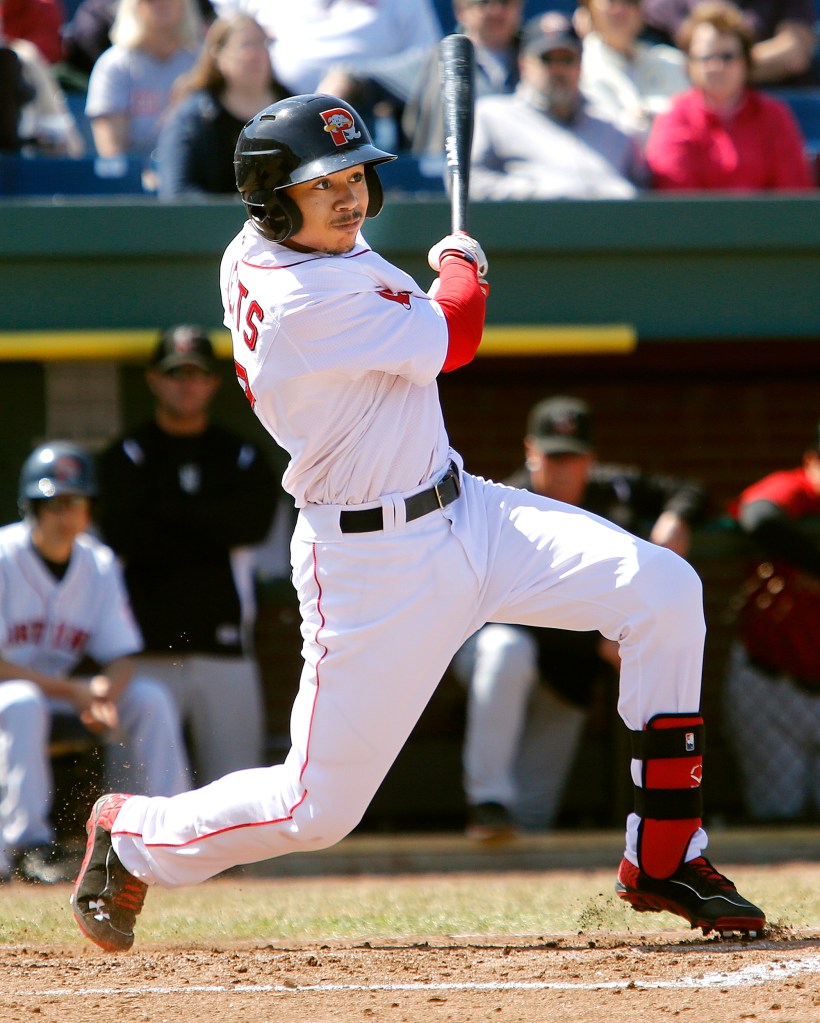
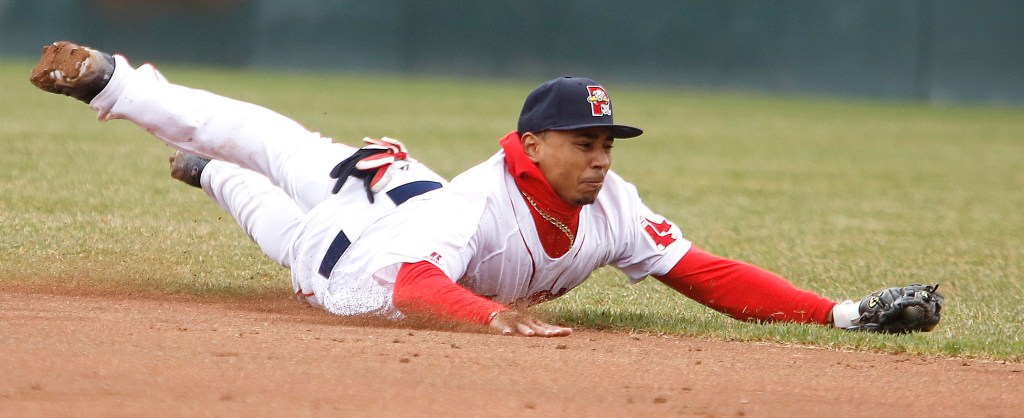
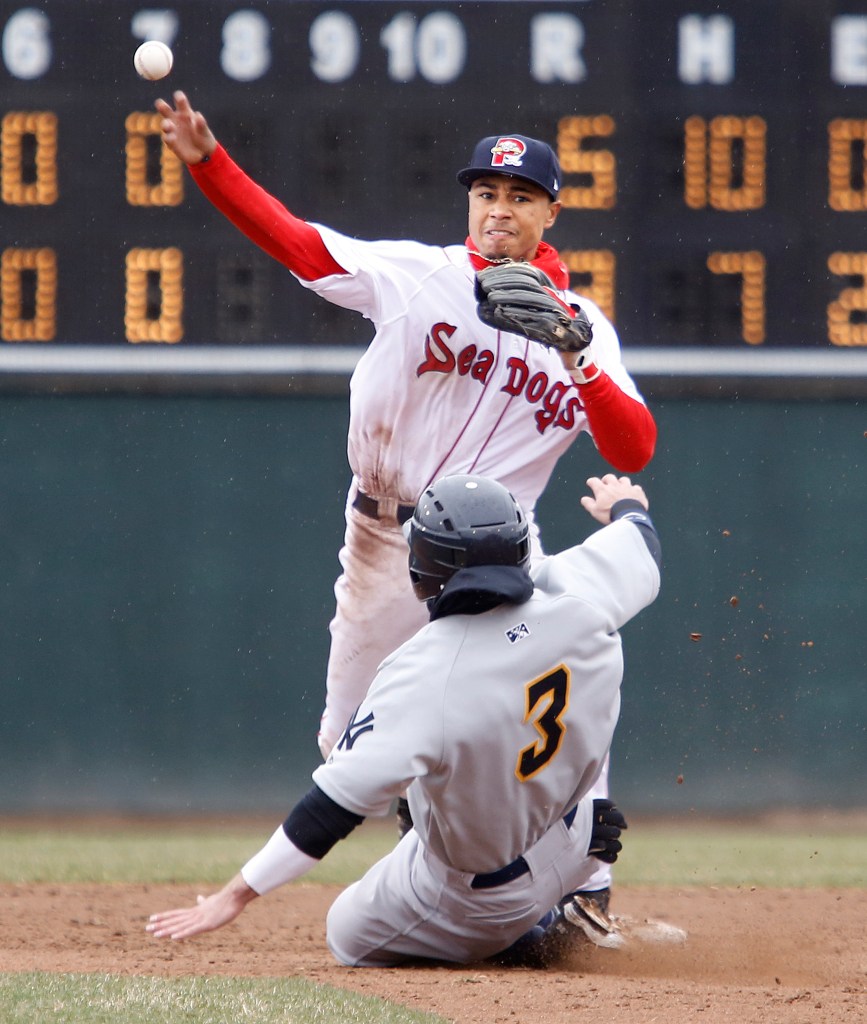
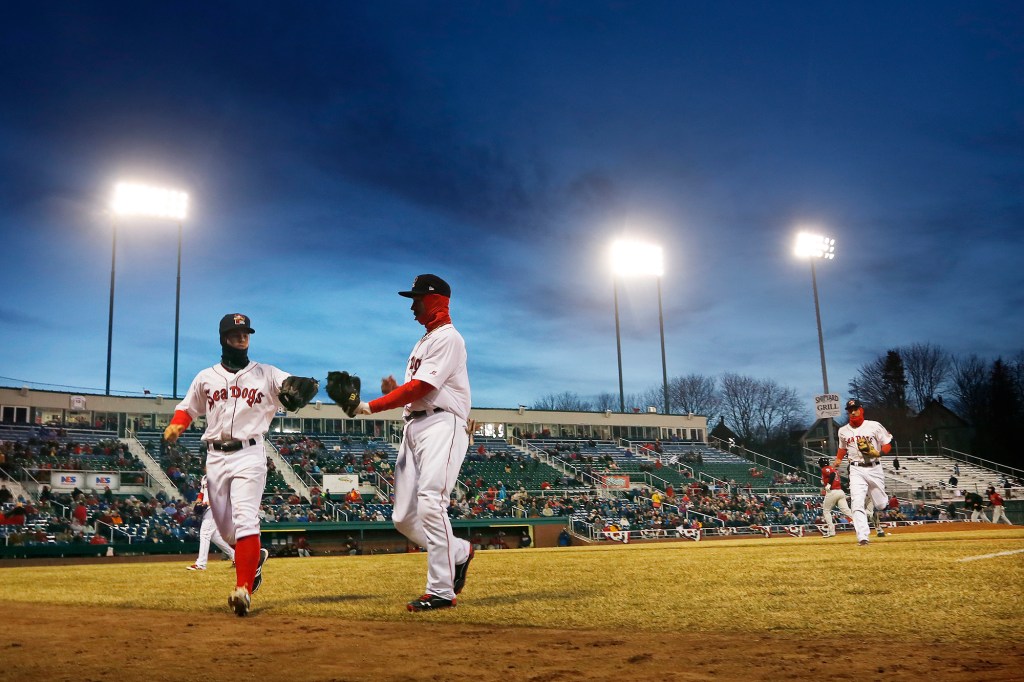

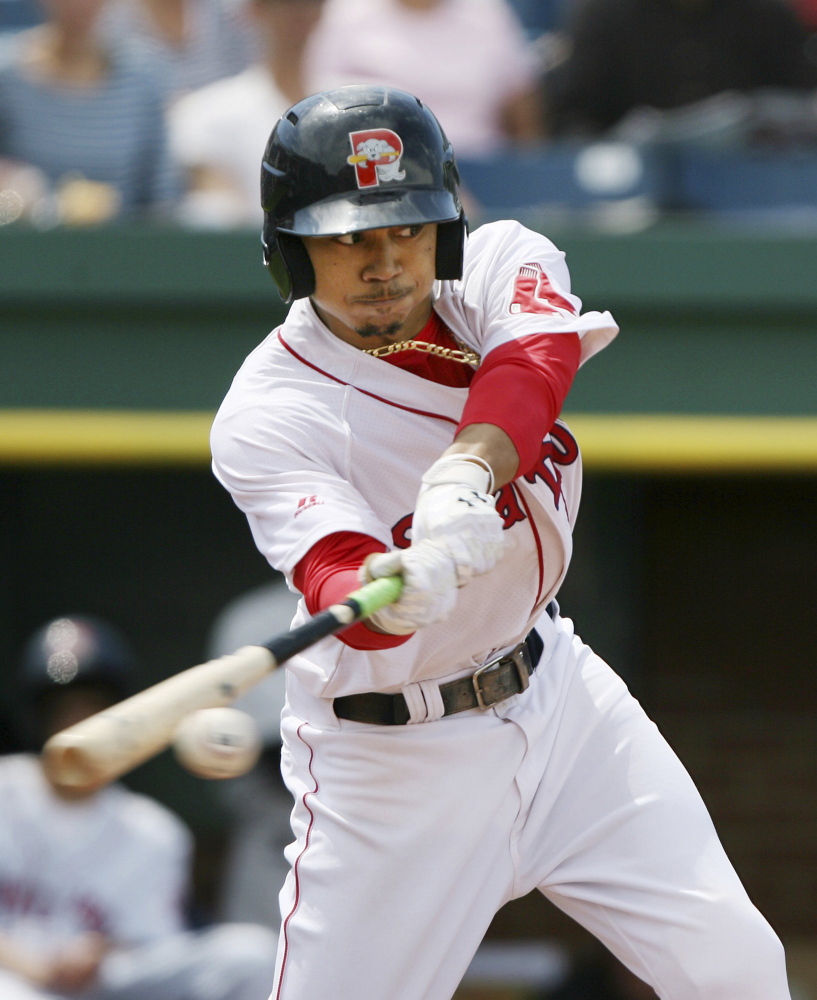
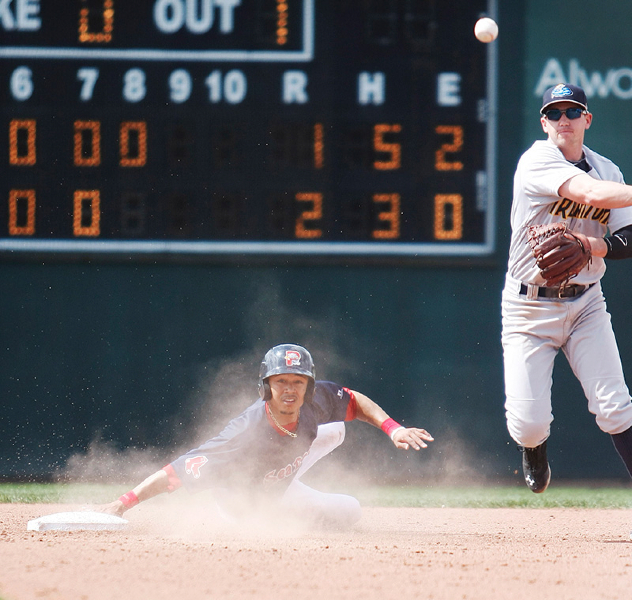



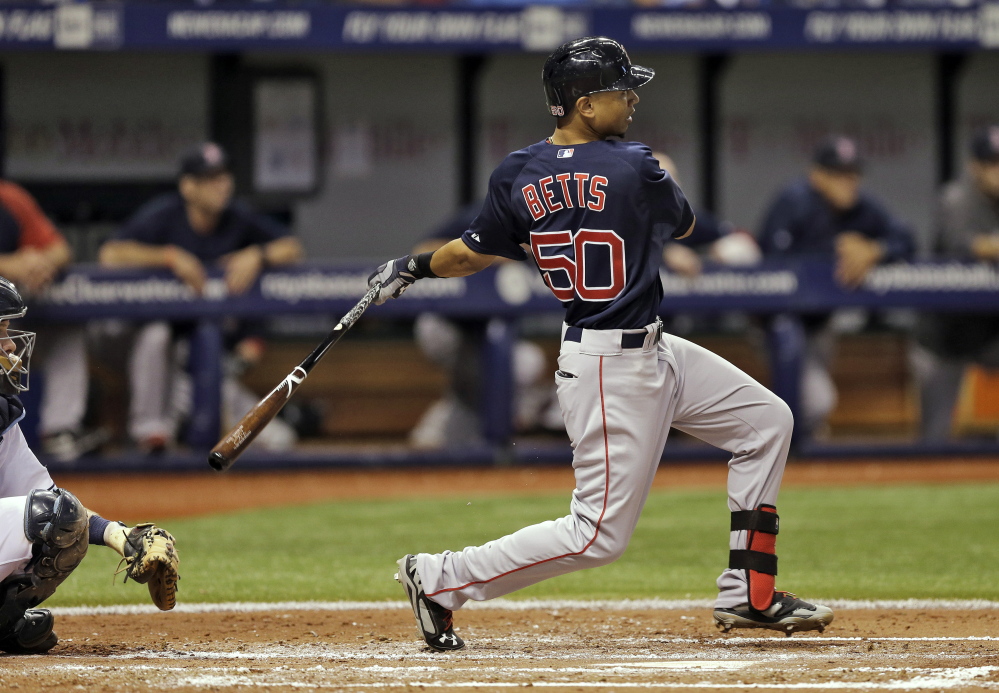

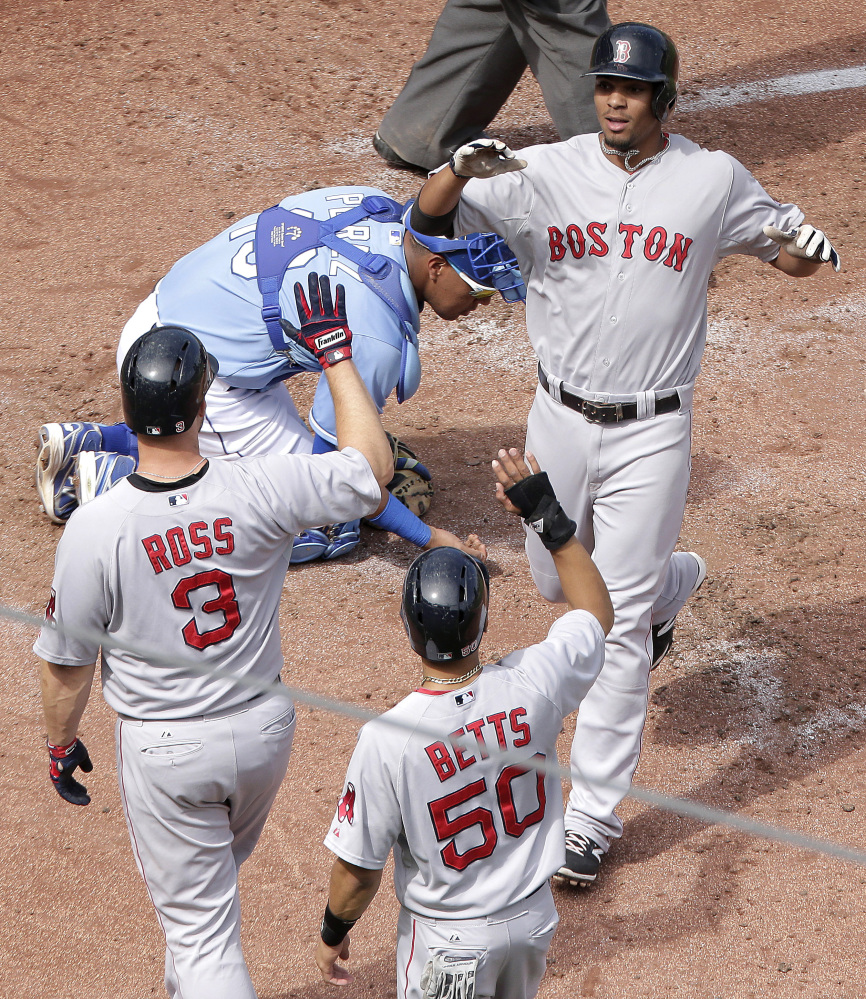
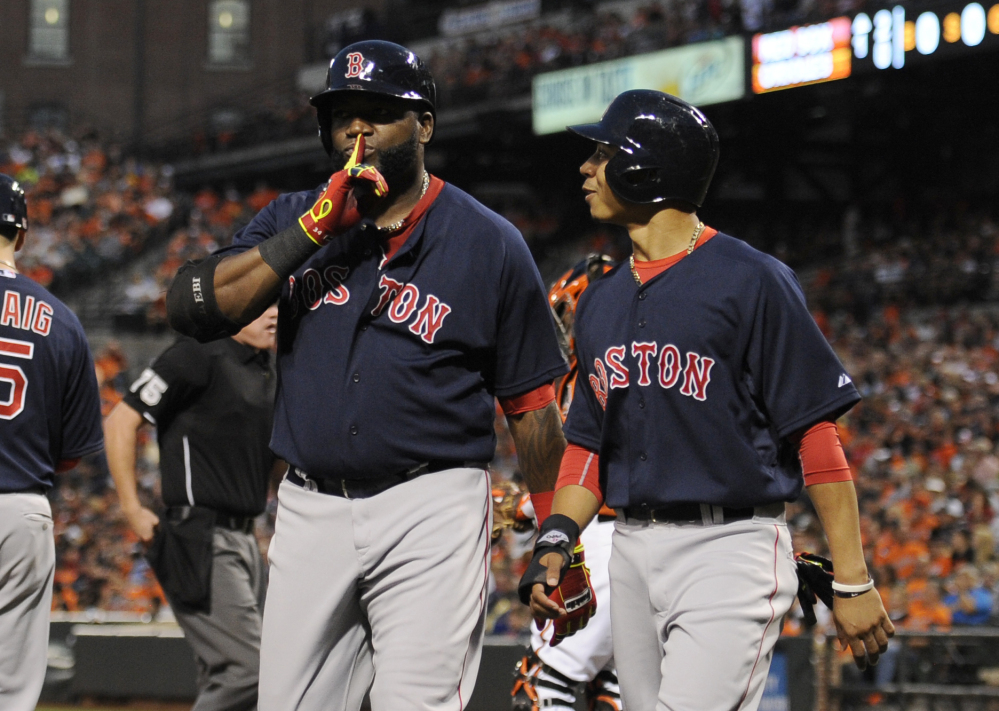

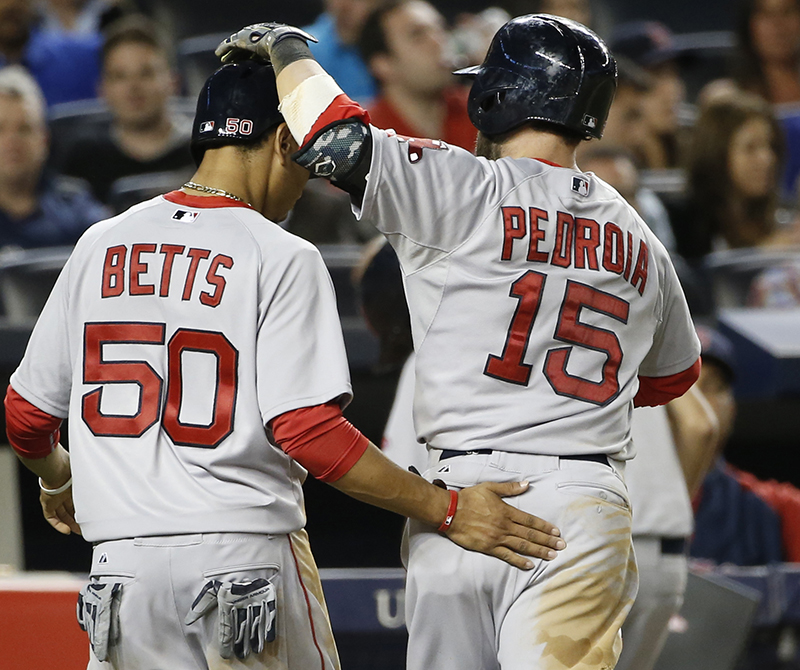
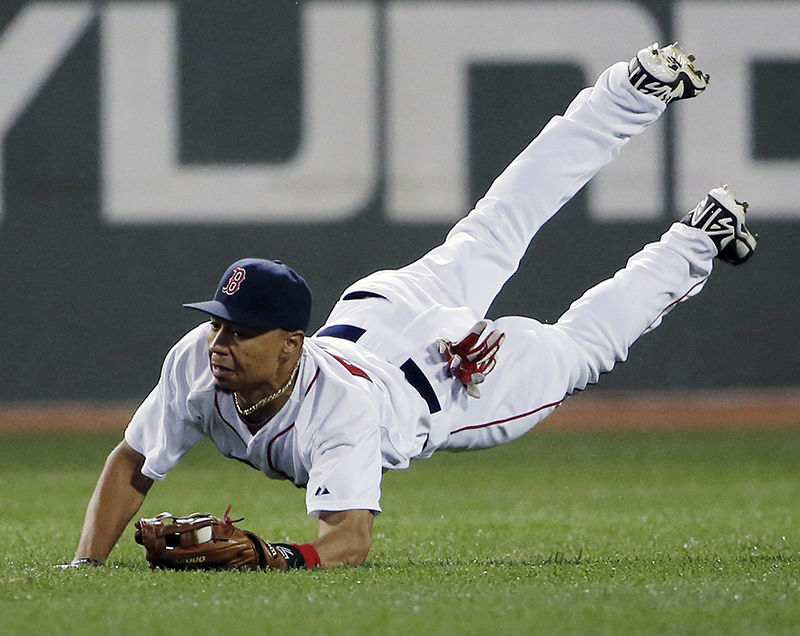

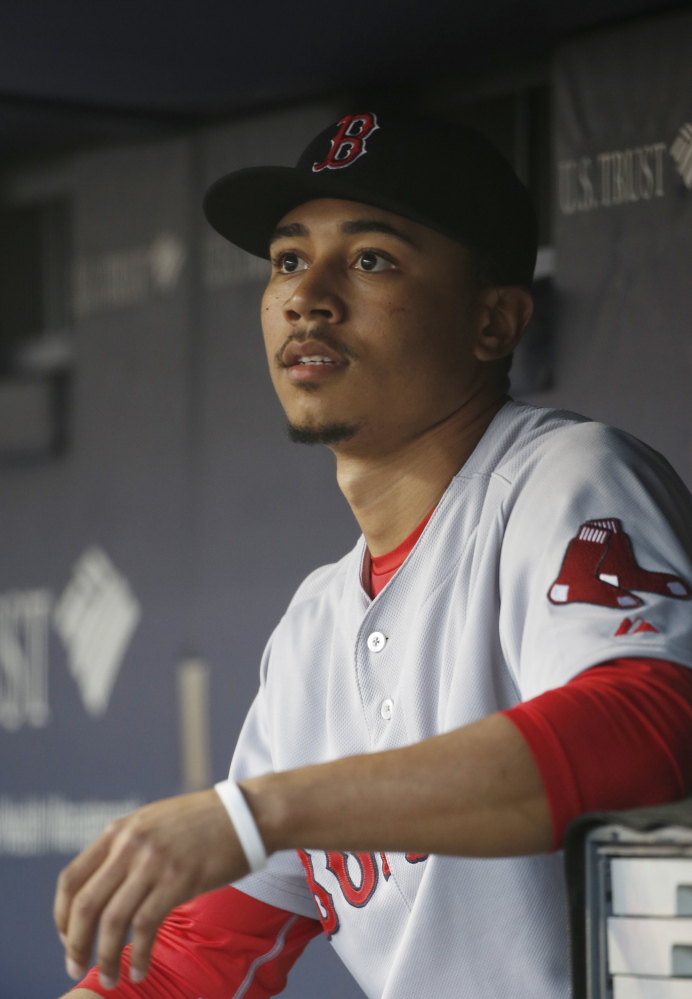

Success. Please wait for the page to reload. If the page does not reload within 5 seconds, please refresh the page.
Enter your email and password to access comments.
Hi, to comment on stories you must . This profile is in addition to your subscription and website login.
Already have a commenting profile? .
Invalid username/password.
Please check your email to confirm and complete your registration.
Only subscribers are eligible to post comments. Please subscribe or login first for digital access. Here’s why.
Use the form below to reset your password. When you've submitted your account email, we will send an email with a reset code.